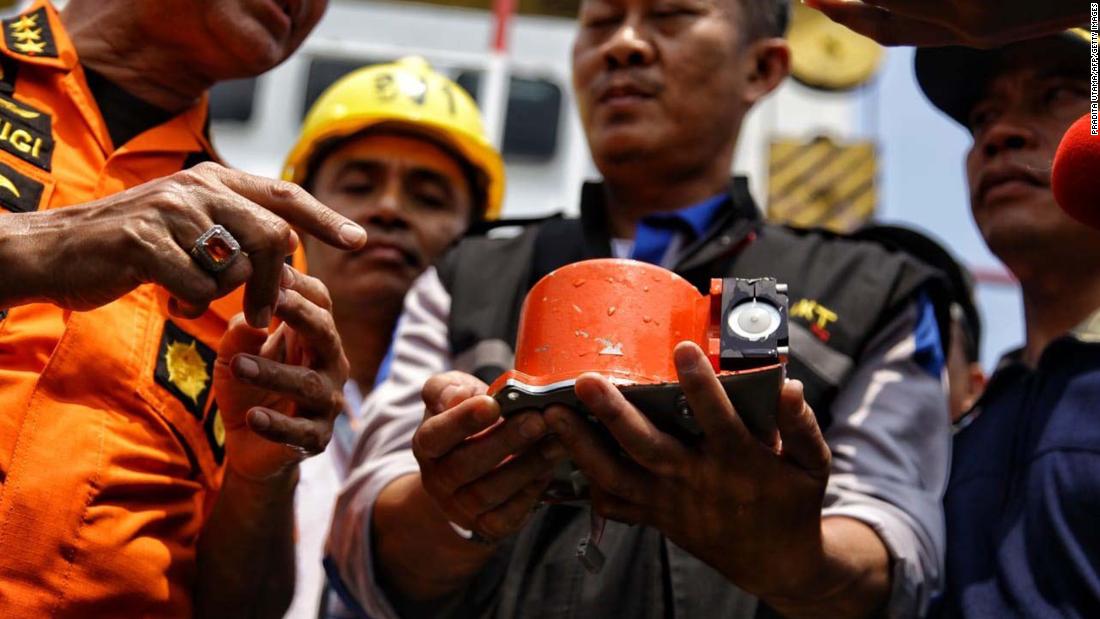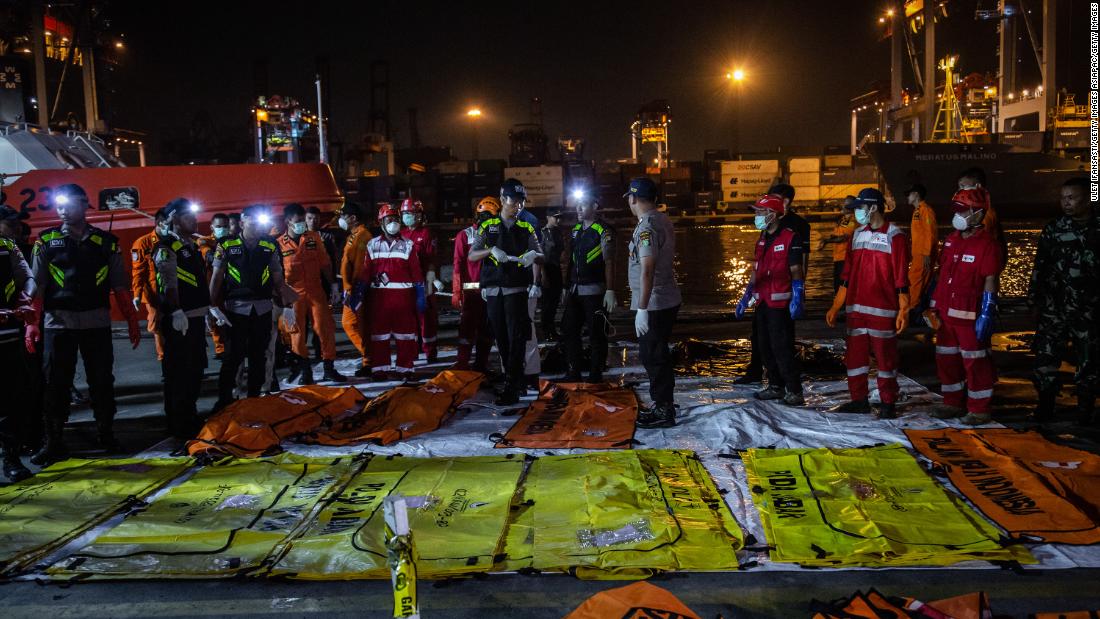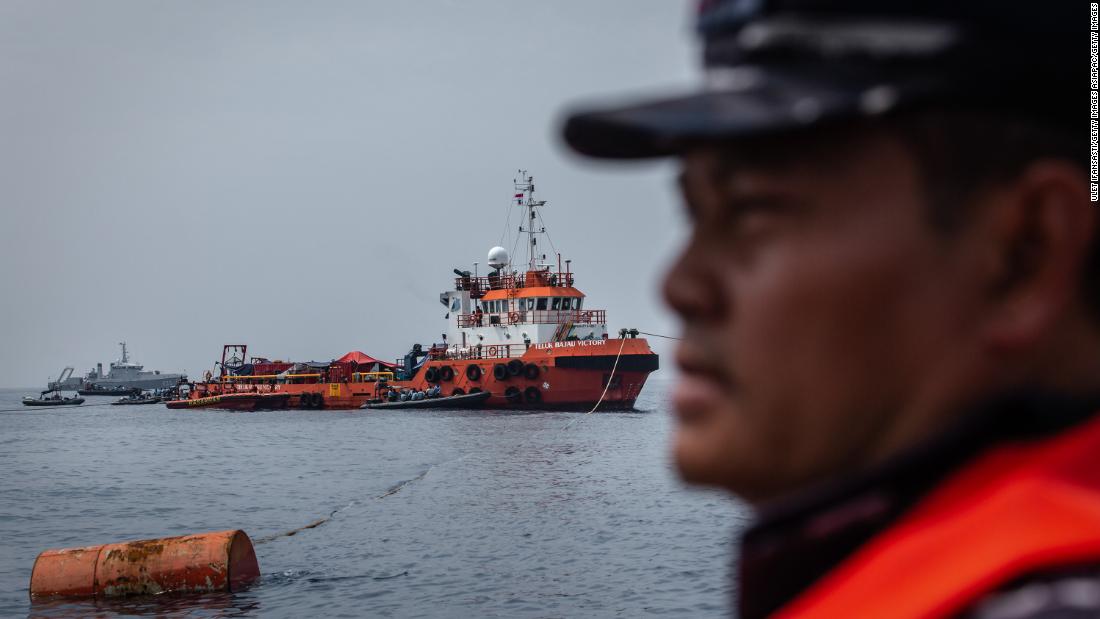Jakarta – Divers searching for the wreckage of Indonesian Lion Air Flight 610 can no longer hear a signal from the aircraft’s missing cockpit voice recorder, the head of Indonesia’s Search and Rescue Agency said Sunday.
Diving teams have been working to locate the device, commonly known as a black box, which could help investigators piece together the final moments of the brand-new Boeing 737 before it crashed, killing all 189 people on board.
Muhammad Syaugi, head of Indonesia’s Search and Rescue Agency, Basarnas, told reporters in Jakarta Sunday that a “ping” from the cockpit voice recorder (CVR) was heard Saturday but “we don’t hear the ping signal today.”
“We checked that spot, located around 50 meters from the location of finding the first black box. But we can’t find the CVR yet,” Syaugi said.
Meanwhile, the plane’s first black box, the flight data recorder, was located Thursday, and investigators said it showed Flight 610 had performed 19 flights — including its final flight.
Six black box experts from four different countries were now analyzing the flight data recorder to piece together the last moments of the new Boeing 737 before it crashed.
Syaugi said that the search operation had been extended and would continue through Wednesday.
The focus of continuing efforts will be to recover additional victim remains and to locate the CVR, he said.
Analysts say finding the cockpit voice recorder is imperative if investigators are to determine whether the crash has implications for other airlines collectively operating thousands of Boeing 737 flights around the world each day.

Search for victims continues
Flight 610 was supposed to take its passengers on a one-hour journey from Jakarta to Pangkal Pinang on the island of Bangka. Instead it crashed 13 minutes after takeoff. The pilots had asked to turn around but didn’t transmit an emergency call.
At least 65 body bags have been gathered since the start of the search-and-rescue operation, though each bag could contain remains of more than one person.
Investigators will have to rely on DNA samples to identify victims because of the condition and size of the remains found. Police have 181 DNA samples from victims’ families and are working to match them to 272 human tissue samples.
Lisda Cancer, head of Disaster Victim Identification, told reporters Friday that just one person has been identified so far, a female, through a fingerprint.
On Wednesday, authorities started bringing relatives to the port to identify victims’ personal belongings, which lay piled up next to cushions and other debris that appeared to be from the aircraft.
Epi Syamsul Qomar, whose 24-year-old son was on the flight, broke down in tears when he recognized his son’s shoe.
“I saw my son’s black sneaker,” he told CNN. “I also saw his bank checkbook.”

One diver has died
The fast-moving currents and muddy waters of the crash site in the Java Sea have hindered recovery efforts since the plane came down Monday shortly after taking off from Jakarta.
On Saturday, Syaugi confirmed that one of the more than 100 divers involved in the search had died.
Syahrul Anto, 48, was found unconscious Friday after his diving partner noticed he had disappeared, said Syaugi. He was immediately brought back to shore and was attended by doctors but Syaugi said that “God had a different plan.”
Anto was a qualified, senior diver “who devoted his life for our country,” Syaugi said.
Syaugi, who is responsible for the diving team, said those involved “are very qualified divers, outstanding divers, with long experience. They are come from Navy special task forces, from the police, from the Basarnas team, and some are volunteers from diving clubs.”

Pilot reported plane issues
The jetliner had experienced technical issues the day before on another route, passengers aboard that flight revealed to CNN.
On Sunday the Boeing 737 Max 8 aircraft — a new plane, which had only around 800 flying hours on the clock — had flown Lion Air’s Bali-Jakarta route and had experienced a significant drop in altitude, passenger Robbi Gaharu said.
“After 10 minutes in the air the plane dropped as if it was losing power. People panicked. It dropped about 400 feet,” said Gaharu, adding that he had confirmed the height of the drop on a flight-tracking website. He said the drop felt like falling into “a really, really deep hole.”
Lion Air confirmed to CNN that the aircraft that crashed on Monday had been used to fly the JT43 Bali-Jakarta route the day before, and Indonesian authorities confirmed that the pilot on Sunday’s flight reported a problem with one of the plane’s instruments.
Capt. Daniel Putut Kuncoro Adi, managing director of Lion Group, said that all information had been handed over to Indonesia’s National Transportation Safety Commission and he could not answer any questions about the fault because of a nondisclosure agreement signed to accommodate the investigation.
As reported by CNN
